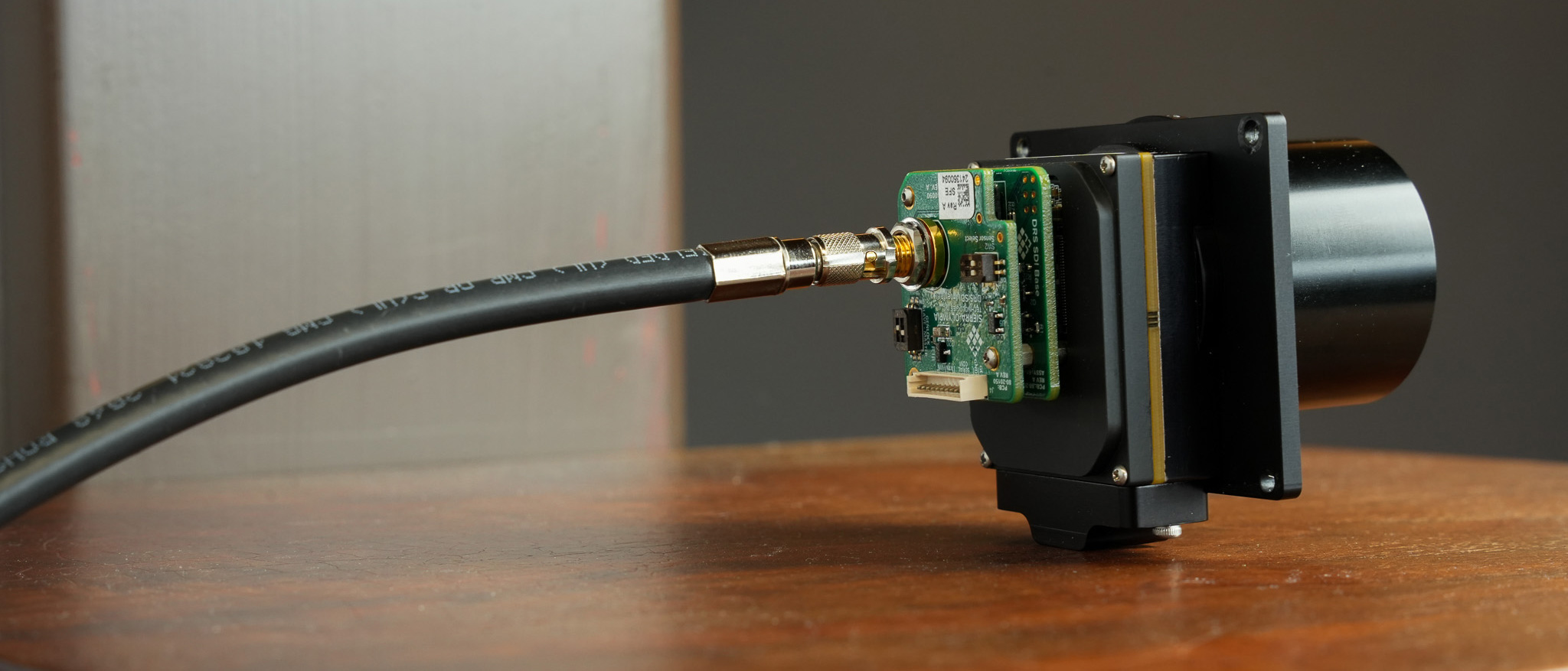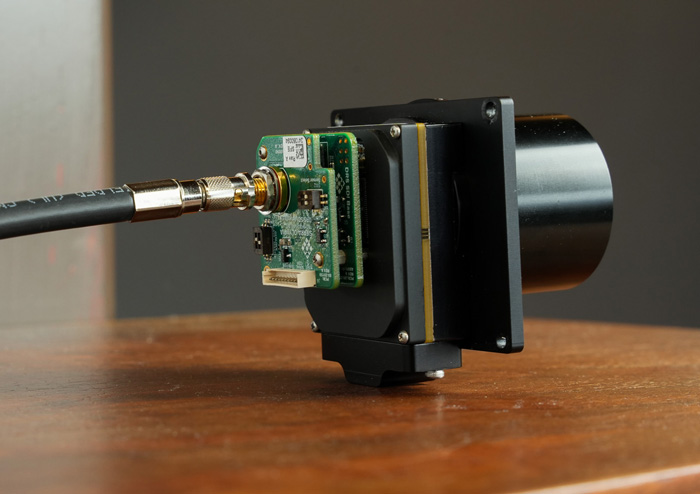When you’re integrating an infrared sensor into a system, you’ve got to think about how data is going to come from the sensor and into your system. The serial digital interface (SDI) is a recent addition to the Viento 10 and Viento HD10 line of sensors and Chief Technology Officer, Stan Voynick, took us through why this feature was added to this line of sensors.
The Viento sensors are a small set of microbolometer sensors, the nickname around the lab is the marshmallow sized sensors. They’re often designed into small, compact spaces that are very dynamic per use case. Often times a cable connection is the best way to connect to the camera. Little differences in how we interface to these cameras can make a big difference in our customer’s ability to integrate them into the into the applications they’re working with. It’s always a main concern that how we get the video out of our cameras given the constraints and portability the space requires.
Three Advantages to SDI Connectivity
1. The Single Connection Point with High Quality Data
In order to get the video out in a different interface, the SDI uses a single coax. It transmits an uncompressed video stream, so you get a high quality video stream, through a single coax cable that can be relatively thin and lightweight. Our customers have asked about getting the Viento sensor integrated into a small moving objects like gimbals or drones. They often have difficulty with ethernet cable and its multiple wires that are needed to be connected when the environment is constant motion while performing its tasks. The ethernet cable can be stiff and hard to move around. This gives SDI the advantage since it has only one connection point and a slim cable.
2. Data Can Travel Further
Another advantage of the SDI is that its signal can travel over long distances. If you camera application is mounted some distance from the receiving element, whether it’s a computer or a monitor or a display, SDI is capable of carrying data 300m or 980ft. This gives it an edge over USB, which is only good over a few meters.
3. Connect Directly to a Computer or Viewfinder
The other consideration when comparing SDI connectivity with Gigabit Ethernet or USB, is that Gig-E and USB both assume that the receiving device is going to be some kind of a processor or a computer. SDI is capable of running to a processor or a computer, but can also go straight to a display, or other kinds of viewfinders. The kind of receiving device you’re using would be another thing to think about in deciding to integrate with SDI.

We hope this provides some insight to the kinds of considerations you need when integrating our infrared cameras into a system. It can often come down to something like how thick and heavy a cable is. Thanks for reading and reach out with any questions about our sensors or how to integrate them.


